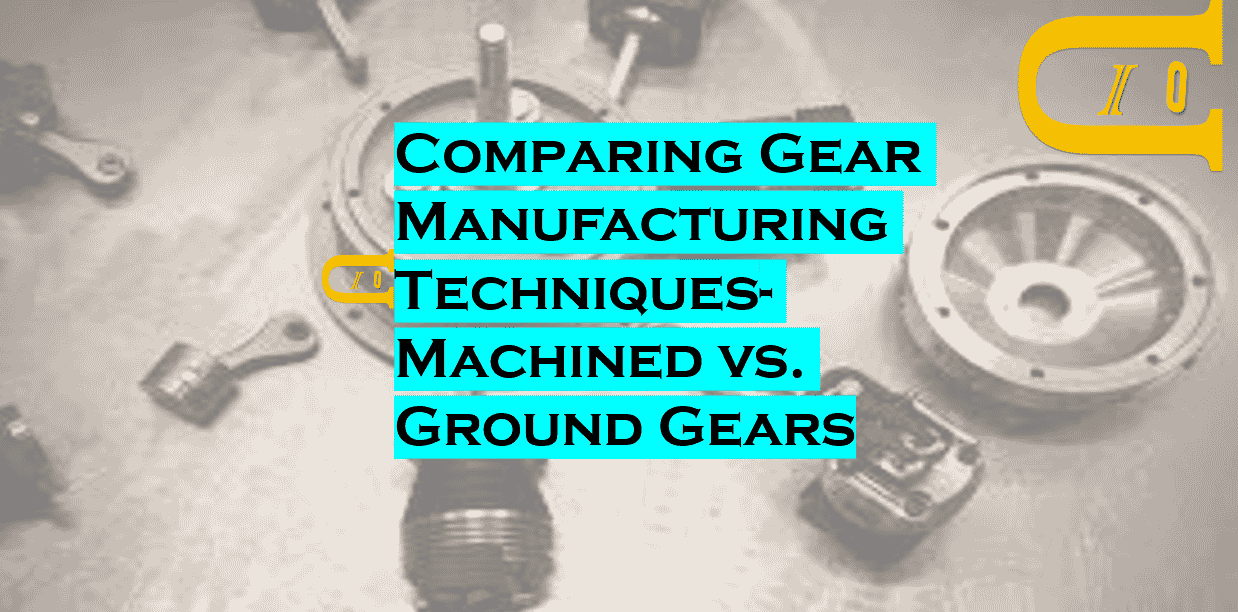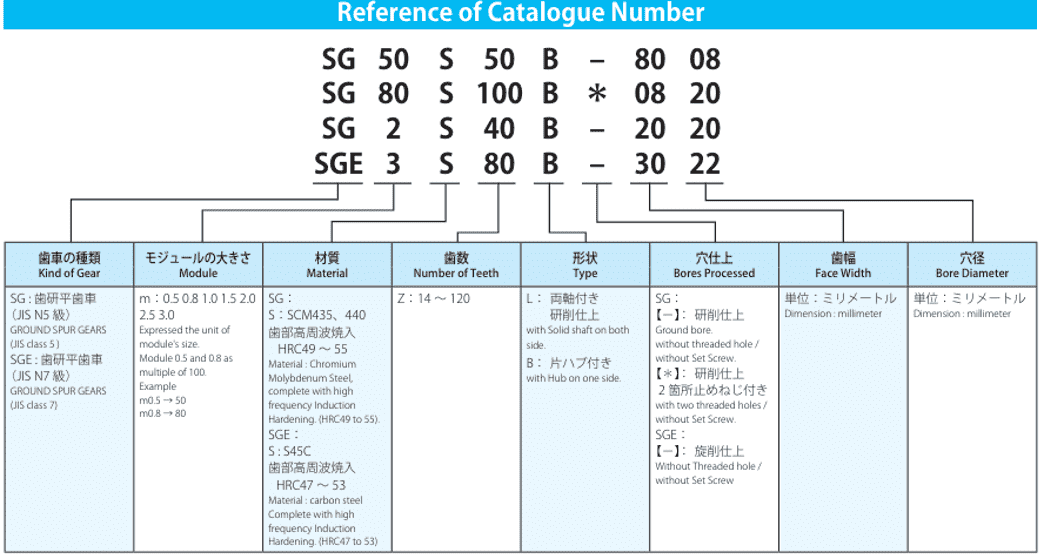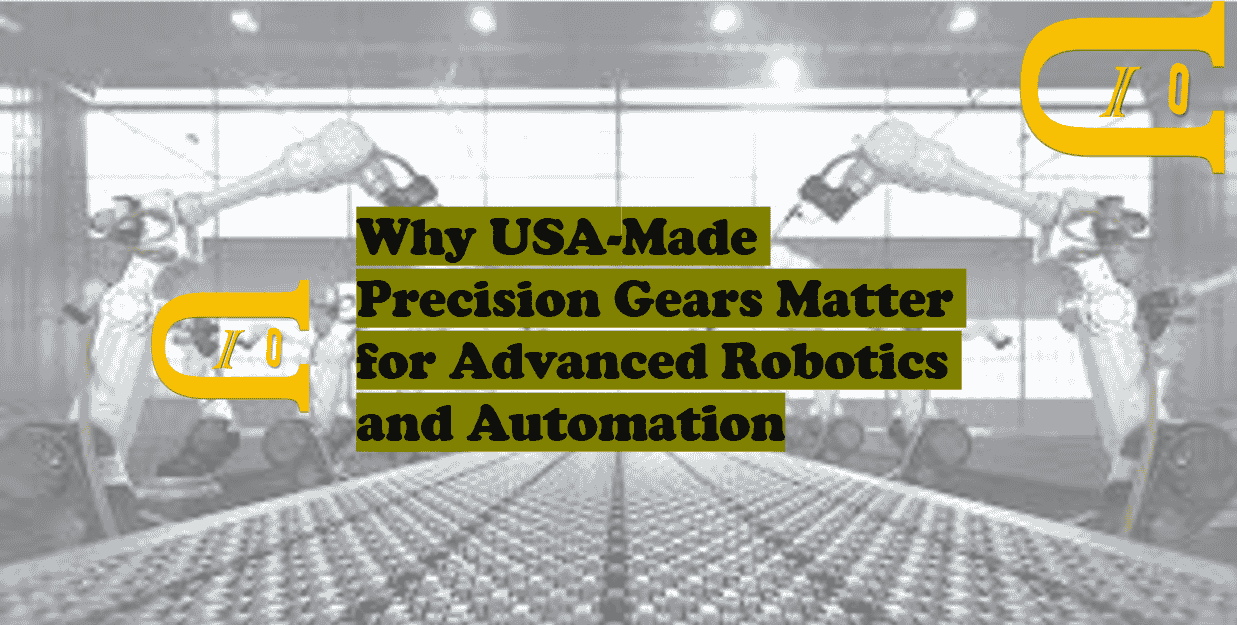Comparing Gear Manufacturing Techniques: Machined vs. Ground Gears
Gears are critical components in a wide range of mechanical systems, from automotive engines to industrial machinery. The manufacturing techniques used to produce gears significantly influence their performance, durability, and precision. Two of the most common methods for gear manufacturing are machining and grinding, each with distinct advantages and applications. In this article, we will compare machined and ground gears, focusing on their technical differences and how these methods affect gear performance across various industries.
Table of Contents
- Introduction
- Machined Gears: Overview and Process
- Ground Gears: Overview and Process
- Technical Differences Between Machined and Ground Gears
- Impact on Various Industries
- Conclusion
Machined Gears: Overview and Process
Machining is a broad category of processes used to create gears, including cutting, hobbing, and shaping. The machining process involves the removal of material from a solid workpiece using tools such as mills, drills, or rotary cutters. The specific technique chosen depends on factors such as gear size, complexity, and material.
Key Machining Techniques for Gears:
- Gear Hobbing: This is a common process for producing spur gears, helical gears, and splines. A rotating hob (a tool with a series of cutting teeth) is used to progressively cut the gear teeth into a cylindrical blank.
- Gear Shaping: Similar to hobbing, this process uses a reciprocating cutter to shape the gear teeth, making it ideal for producing internal gears or larger gears with specific tooth profiles.
- Broaching: Used primarily for internal gears or sprockets, broaching involves using a multi-tooth cutter to remove material from a gear blank in a single pass.
Ground Gears: Overview and Process
Grinding is a finer, more precise process compared to machining. It is used primarily for finishing gears after they have been initially machined, ensuring a high level of accuracy in the final product. The grinding process uses an abrasive wheel to wear away small amounts of material from the gear teeth, offering exceptional surface finish and precision.
Key Grinding Techniques for Gears:
- Gear Grinding: This process refines the shape and tooth profile of the gear after it has been rough-machined. Specialized grinding wheels are used to polish and finalize the tooth geometry.
- Cylindrical Grinding: This method is employed for gears with a cylindrical shape, ensuring uniformity and precision in gear dimensions.
- Profile Grinding: Used for high-precision gears, profile grinding enables the production of gears with very specific tooth forms and tight tolerances.
Technical Differences Between Machined and Ground Gears
The key difference between machined and ground gears lies in the level of precision and surface finish achieved during the manufacturing process. Machining, while efficient, typically results in gears that require additional finishing steps to meet high-performance standards. Grinding, on the other hand, produces gears with exceptional surface quality and dimensional accuracy right from the start.
Precision and Tolerances
- Machined Gears: While machining methods like hobbing and shaping can achieve reasonably accurate gear profiles, they tend to have more variation in terms of tolerances. Machined gears often require additional finishing operations, such as grinding or lapping, to meet strict tolerances, especially for high-precision applications.
- Ground Gears: The grinding process provides superior dimensional accuracy, with tighter tolerances than most machining methods. This is particularly important in industries where minute deviations can lead to mechanical failure or inefficiency.
Surface Finish and Tooth Quality
- Machined Gears: Gears created through machining methods can have a rougher surface finish compared to ground gears. The roughness of the surface can affect the gear's efficiency, leading to higher friction, wear, and energy losses over time.
- Ground Gears: Grinding produces a much smoother surface finish, reducing friction and wear between teeth. This leads to better performance, especially in applications where gears operate at high speeds or under heavy loads.
Durability and Performance
- Machined Gears: While machined gears are sufficient for many applications, they may not be ideal for environments that demand high durability or performance. The initial rough surface finish, coupled with the need for additional finishing steps, can result in reduced fatigue resistance and a higher risk of failure under extreme loads.
- Ground Gears: Ground gears offer superior durability due to their refined surface finish and tight tolerances. They are less prone to wear and tear, making them ideal for high-performance applications in industries such as aerospace, automotive, and power transmission, where precision and reliability are critical.
Impact on Various Industries
The choice between machined and ground gears depends largely on the specific requirements of the industry in question. Let’s explore how each technique impacts the performance of gears across various sectors:
Automotive Industry
In the automotive industry, gears must be designed for both performance and durability. Machined gears are often used in standard transmission systems, where the cost of production is a significant consideration. However, for high-performance applications, such as racing transmissions or electric vehicle drivetrains, ground gears are preferred. Their superior precision, smoother surface, and higher durability ensure that these gears can withstand high rotational speeds and heavy loads without failing prematurely.
Aerospace Industry
In aerospace applications, gears are subjected to extreme conditions such as high speeds, temperature variations, and intense mechanical stress. Ground gears are essential in this sector, as their precise tooth geometry, low friction, and long-term durability are crucial for the reliability of aircraft engines, landing gear systems, and other critical components. Even the smallest error in gear manufacturing can result in catastrophic failure in aerospace applications, making the accuracy of ground gears indispensable.
Industrial Machinery and Power Generation
For heavy-duty industrial machinery and power generation equipment, the demands on gear performance are high. Machined gears are often used in less demanding applications where cost savings are important, and moderate precision is sufficient. However, in critical applications like turbines, pumps, and compressors, where downtime can be expensive, ground gears are commonly used due to their enhanced reliability, longevity, and minimal wear.
Robotics and Precision Instruments
In robotics and precision instruments, gears must operate with extreme accuracy and smoothness to ensure precise motion and control. Ground gears are typically used in these applications because their superior surface finish and tight tolerances ensure optimal performance, minimal noise, and reduced maintenance requirements.
Conclusion
Both machined and ground gears offer distinct advantages, and their selection depends on the specific needs of the application. Machined gears are cost-effective and suitable for many general applications, while ground gears are preferred for high-performance, precision-demanding industries where durability and efficiency are paramount. By understanding the technical differences between these two manufacturing techniques, engineers can make more informed decisions to optimize gear performance in their systems, whether in automotive, aerospace, industrial machinery, or precision robotics.






